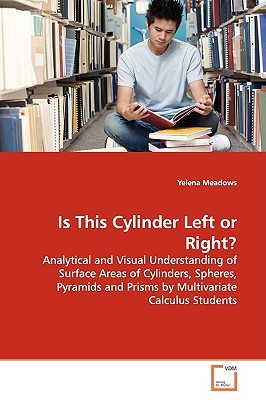
- We will send in 10–14 business days.
- Author: Yelena Meadows
- Publisher: VDM Verlag
- ISBN-10: 3639134699
- ISBN-13: 9783639134698
- Format: 15.2 x 22.9 x 1.4 cm, softcover
- Language: English
- SAVE -10% with code: EXTRA
Reviews
Description
Calculus is often viewed as a gateway to more technical college majors, such as engineering, computer science and teaching of mathematics. The high rate of students changing their majors from science-oriented to less mathematically rigorous majors can be observed at any University. Students struggle with passing multivariate content of the calculus college sequence (calculus I, II, and III) in particular, the visual aspect of the course. In the course of semester-long study, observed students divided into three distinct groups according to their mathematical visualization preference and mathematical accuracy characteristics. This book provides an opportunity for mathematics education community to view some of the basic visual mathematical concepts within multivariate context through the students' eyes. The results were analyzed through the theoretical frame of Krutetskii (1976), Presmeg's (1985, 1988) mathematical visualization instrument and types of imagery; and Guzman's (2002) types of visualization. In addition, analysis of students' errors was made within Donaldson's (1963) classification of errors.
EXTRA 10 % discount with code: EXTRA
The promotion ends in 17d.02:18:48
The discount code is valid when purchasing from 10 €. Discounts do not stack.
- Author: Yelena Meadows
- Publisher: VDM Verlag
- ISBN-10: 3639134699
- ISBN-13: 9783639134698
- Format: 15.2 x 22.9 x 1.4 cm, softcover
- Language: English English
Calculus is often viewed as a gateway to more technical college majors, such as engineering, computer science and teaching of mathematics. The high rate of students changing their majors from science-oriented to less mathematically rigorous majors can be observed at any University. Students struggle with passing multivariate content of the calculus college sequence (calculus I, II, and III) in particular, the visual aspect of the course. In the course of semester-long study, observed students divided into three distinct groups according to their mathematical visualization preference and mathematical accuracy characteristics. This book provides an opportunity for mathematics education community to view some of the basic visual mathematical concepts within multivariate context through the students' eyes. The results were analyzed through the theoretical frame of Krutetskii (1976), Presmeg's (1985, 1988) mathematical visualization instrument and types of imagery; and Guzman's (2002) types of visualization. In addition, analysis of students' errors was made within Donaldson's (1963) classification of errors.


Reviews